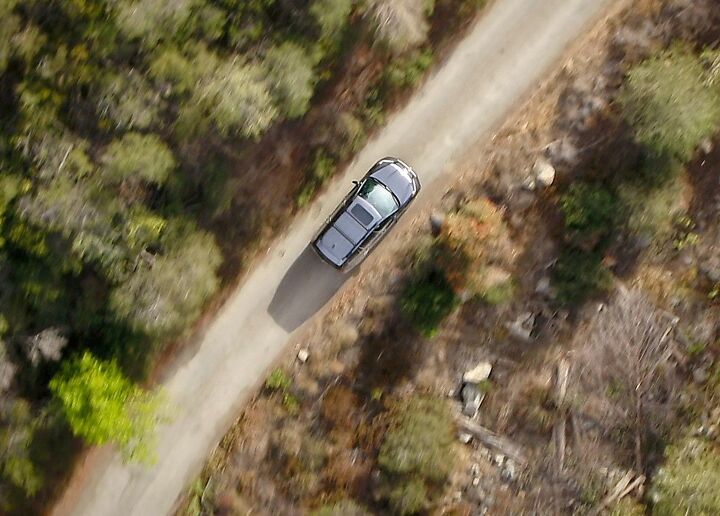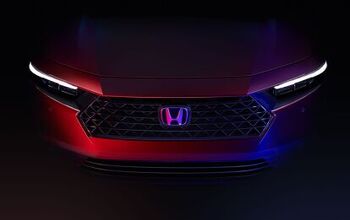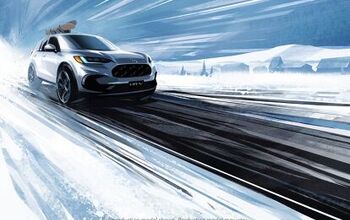Honda Teases a Passport That's a Real Honda

The space between compact and midsize crossovers, automakers have discovered, is ripe for the creation of a wholly new segment. A tweener, essentially, that bridges the gap with two rows of seating but more cargo room, power, and (often) luxury than a compact can muster.
Ford learned this long ago with its Edge, and General Motors recently discovered it with the reborn 2019 Blazer. Nissan’s Murano stakes out the same ground, positioning itself as the slightly upscale alternative to the Rogue and Pathfinder. Then there’s the former Hyundai Santa Fe Sport, now just Santa Fe. Not to miss out on an opportunity for big crossover bucks, Honda’s preparing to enter the fray with a new iteration of the Passport.
Unlike the Passport that came before, there’s no Isuzu hiding beneath these clothes.
We learned about the model’s looming return last year, but full specs won’t be available until Nov. 27th, the day before its LA Auto Show debut. At least there’s something to look at now, as Honda teased some camo-free shots Thursday. Unmasked, maybe, but cloaked by distance and dust. The automaker provided a video, seemingly shot at 500 feet, of the vehicle carving a path up a dirt mountain road, never once providing a front or side angle.
What a tease.
The original Passport saw Honda take an Isuzu Rodeo and spend very little time turning it into a just-in-time SUV offering. Introduced for the 1994 model year, it survived through two generations until its demise in 2002. This model dispenses with yesterday’s badge engineering BS, however, preferring an in-house platform (a shortened version of the Pilot’s) to go with its five-seat cabin.
Honda doesn’t give us much to go on, but it’s expected that the powertrain will also be a Pilot carryover. That means a 3.5-liter V6 making 280 horsepower and 262 lb-ft of torque mated to a six- or nine-speed automatic, though it wouldn’t be surprising to see Honda drop a turbocharged 2.0-liter in this rig, as well.
With sales of even well-regarded passenger cars dropping fast, adding a new, high-margin entry to the company’s light truck lineup would be a boon for Honda. Through October, total Honda brand car sales fell 9.8 percent, with a 14.8 percent year-over-year dip recorded last month. Meanwhile, light truck volume rose 5.3 percent, year to date.
The 2019 Honda Passport launches early next year.
[Images: Honda]

More by Steph Willems
Latest Car Reviews
Read moreLatest Product Reviews
Read moreRecent Comments
- Kjhkjlhkjhkljh kljhjkhjklhkjh A prelude is a bad idea. There is already Acura with all the weird sport trims. This will not make back it's R&D money.
- Analoggrotto I don't see a red car here, how blazing stupid are you people?
- Redapple2 Love the wheels
- Redapple2 Good luck to them. They used to make great cars. 510. 240Z, Sentra SE-R. Maxima. Frontier.
- Joe65688619 Under Ghosn they went through the same short-term bottom-line thinking that GM did in the 80s/90s, and they have not recovered say, to their heyday in the 50s and 60s in terms of market share and innovation. Poor design decisions (a CVT in their front-wheel drive "4-Door Sports Car", model overlap in a poorly performing segment (they never needed the Altima AND the Maxima...what they needed was one vehicle with different drivetrain, including hybrid, to compete with the Accord/Camry, and decontenting their vehicles: My 2012 QX56 (I know, not a Nissan, but the same holds for the Armada) had power rear windows in the cargo area that could vent, a glass hatch on the back door that could be opened separate from the whole liftgate (in such a tall vehicle, kinda essential if you have it in a garage and want to load the trunk without having to open the garage door to make room for the lift gate), a nice driver's side folding armrest, and a few other quality-of-life details absent from my 2018 QX80. In a competitive market this attention to detai is can be the differentiator that sell cars. Now they are caught in the middle of the market, competing more with Hyundai and Kia and selling discounted vehicles near the same price points, but losing money on them. They invested also invested a lot in niche platforms. The Leaf was one of the first full EVs, but never really evolved. They misjudged the market - luxury EVs are selling, small budget models not so much. Variable compression engines offering little in terms of real-world power or tech, let a lot of complexity that is leading to higher failure rates. Aside from the Z and GT-R (low volume models), not much forced induction (whether your a fan or not, look at what Honda did with the CR-V and Acura RDX - same chassis, slap a turbo on it, make it nicer inside, and now you can sell it as a semi-premium brand with higher markup). That said, I do believe they retain the technical and engineering capability to do far better. About time management realized they need to make smarter investments and understand their markets better.



































Comments
Join the conversation
I love Honda, but they can’t seem to build enough Pilots, CR-Vs, and HR-Vs as it is. Where are they going come up with the production capacity for this?
I had a 1980 Honda Passport. That's what they called the Super Cub in the US, because Piper Aircraft owned the "Super Cub" name in the US.